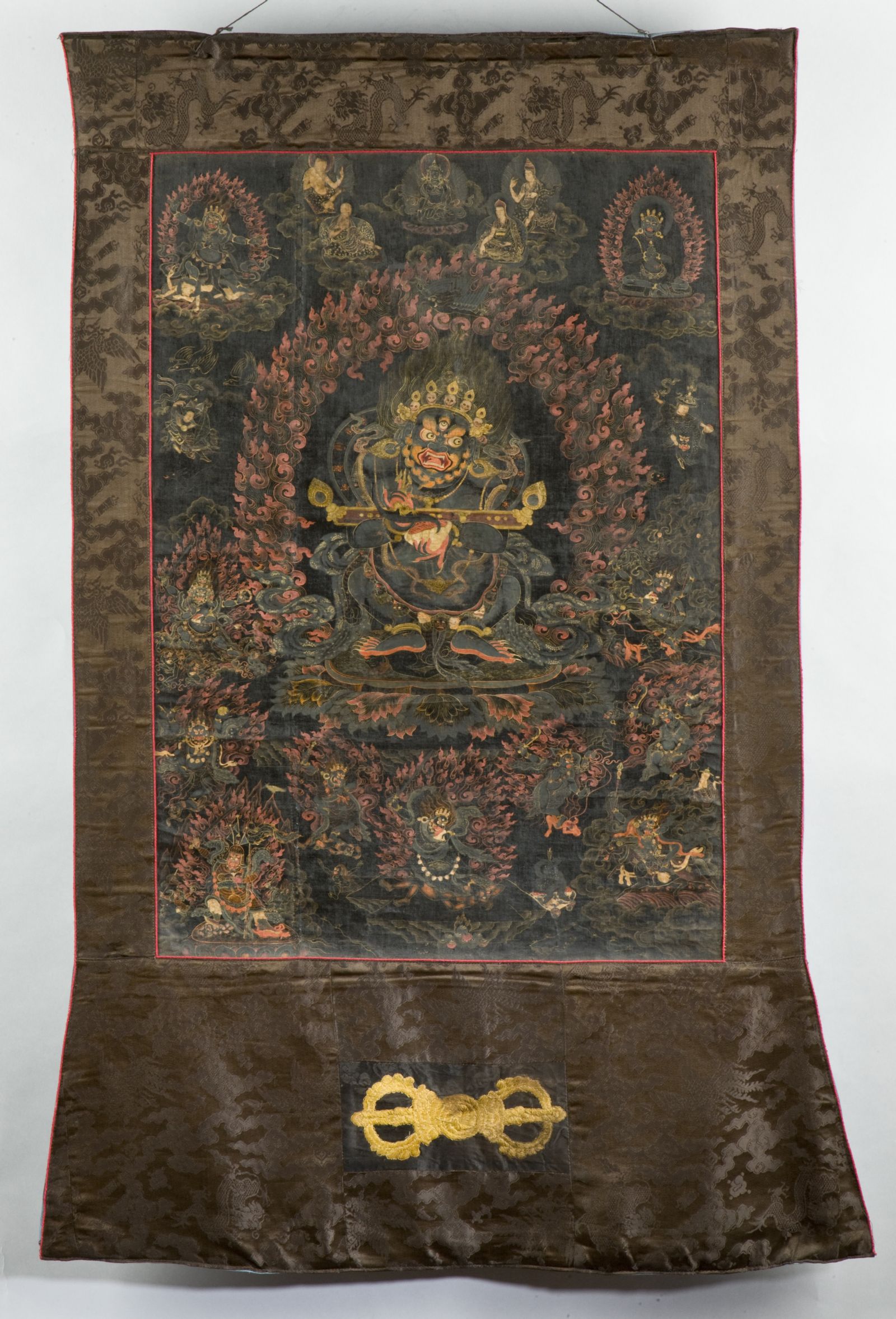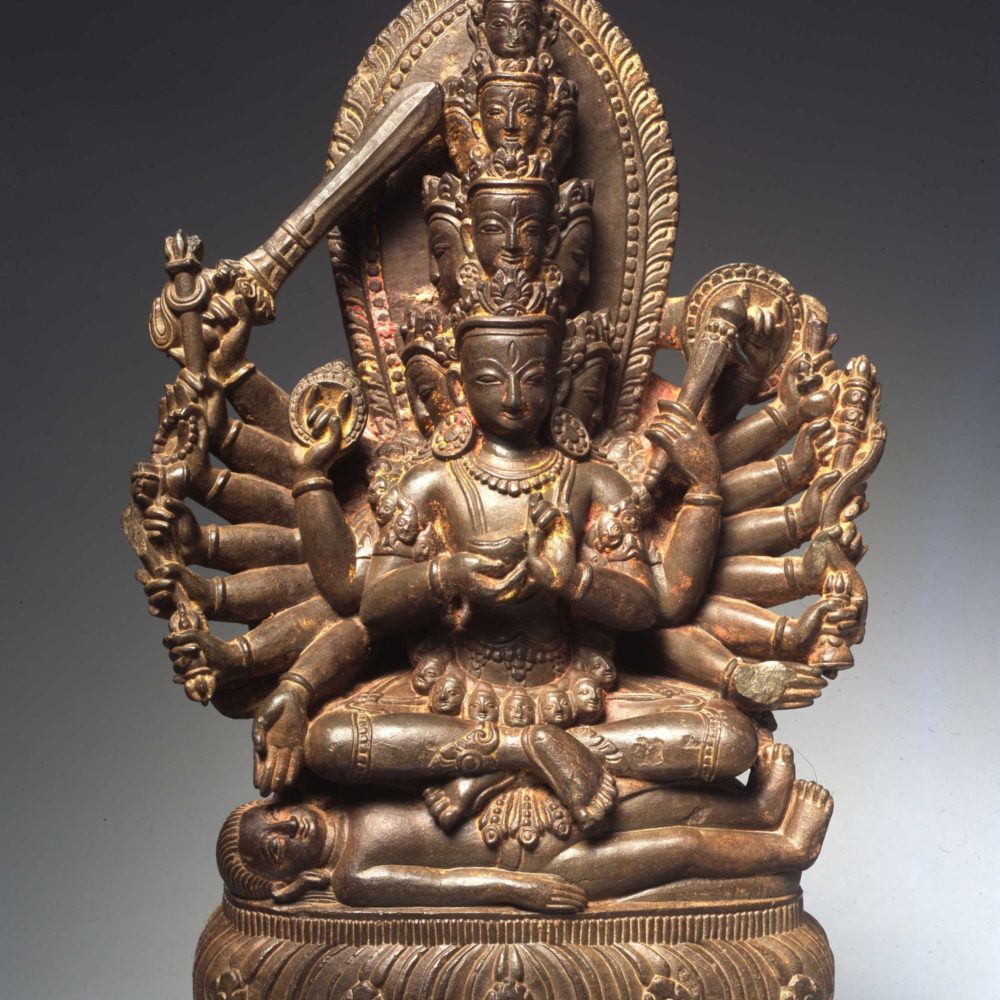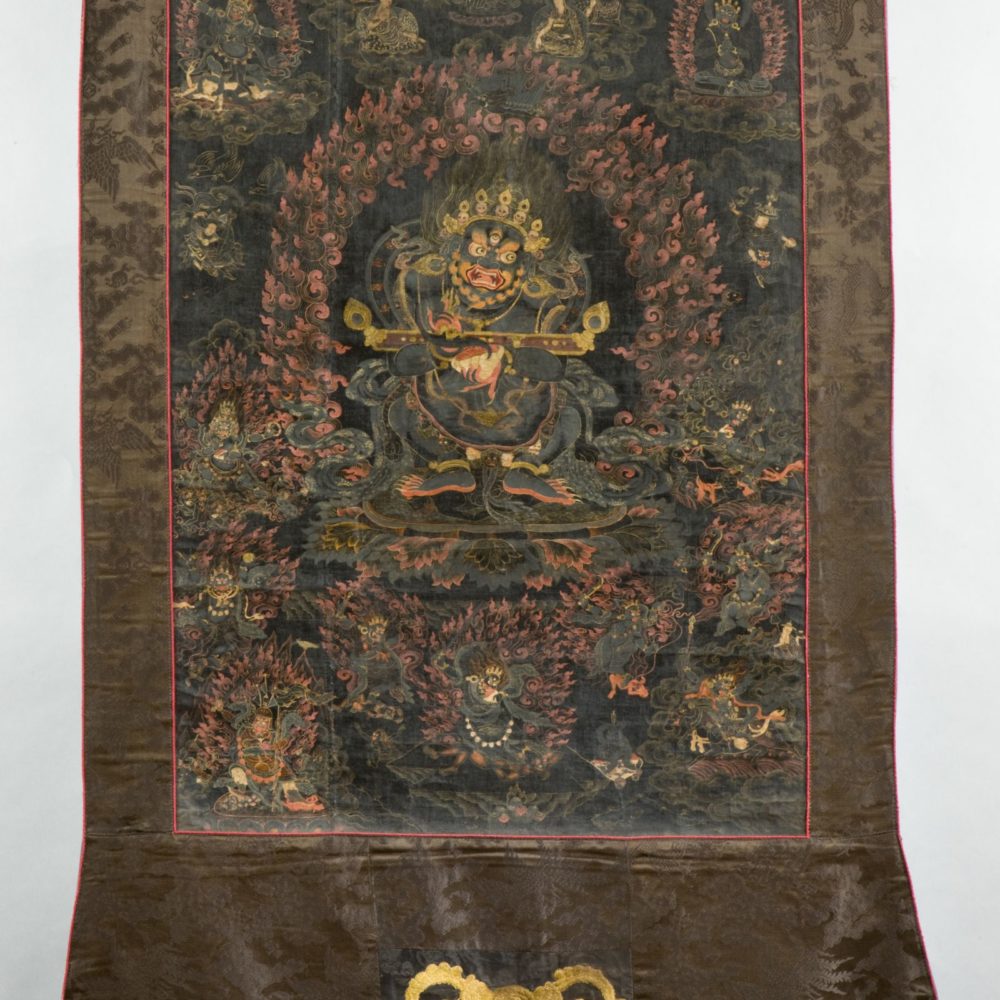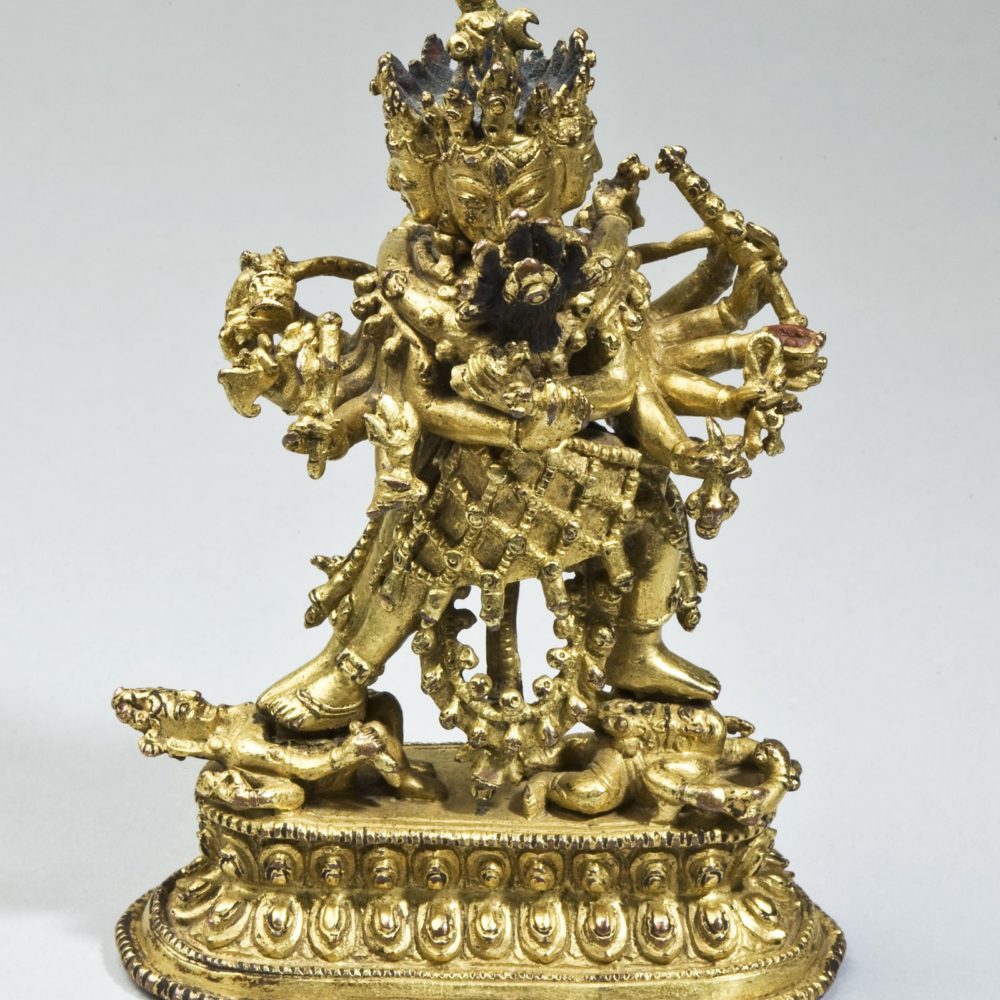Black gouache Thangka of Mahakala on cotton
玛哈嘎拉大黑天唐卡
18th Century, Tibet
18世紀,西藏
Height with Mounting: 112.0cm, 44.1 inches; Width with Mounting: 77.0 cm, 30.3 inches. Height of Painting: 72.5 cm, 28.5 inches; Width of Painting: 49.5 cm, 19.5 inches.
裝裱高:112.0 釐米;裝裱寬:77.0 釐米 - 唐卡圖高:72.5 釐米, 寬高:49.5 釐米
The two-armed Mahakala Panjaranatha, or Lord of the Pavilion, is a protector often associated with the Sakya Order. The thangka is painted on a black ground; the imagery delineated using shades of red, white, gold, a mat black and a dark grey green. The deity stands with a stout body on short, thick, strong limbs, the feet bearing long menacing claws, upon the body of a prostrate corpse, symbolizing the death of negativities, and the complete uprooting of negative patterns. His flaming hair is decorated with a crown of skulls which rises from his forehead; his face possesses a typical wrathful expression, the mouth contorted into an angry grimace from the corners of which protrude four long fangs. The bulging, bloodshot eyes are fierce and angry with a third eye prominently visible in the middle of the forehead. A mandala of stylized flames dances around Mahakala, who holds before him a huge Vajra chopper and a large white skull bowl full of the blood and guts of demons turned into elixir. He wears around his neck a bejewelled necklace, a snake, and a further necklace of severed skulls. Across the crooks of his elbows is an ornamented wooden gandi gong, used in Buddhist monasteries to call the monks to assemblies.
Directly above Mahakala, in front of the flames is a Garuda bird, originally the mount of the Lord Vishnu. Around the upper border is a Buddha flanked by Tibetan Lamas wearing pointed red hats on his left, and monks or possibly mahasiddhas, on his right. In the upper right corner is the goddess Ekajati, semi-wrathful in appearance, seated with two hands holding a vase. On the opposite side is Bhutadamara Vajrapani, with one face and four hands in a wrathful appearance similar to Mahakalas. Two smaller dancing figures are each placed under Ekajati and Bhutadamara Vajrapani, wearing what may be a shaman’s oracle hat. A further figure with a similar hat and skin tone is represented near the bottom right corner between two larger deities. On the right hand side of Mahakala’s waist is Shri Devi (Tibetan: Palden Lhamo), with one face and four hands holding in the right a sword and skull cup and in the left a spear and trident, riding a mule through an ocean of blood. On the left of Mahakala, is Chaturmukha mahakala, with four faces and four arms, the upper left hand hold a rosary made of skulls, the upper right hand holds a sword, and the lower left hand holds a skull cup filled with blood.
The two-armed deity riding a mule in the bottom right corner is a specific form of Magzor Gyalmo, depicted facing backwards, this figure is holding a kapala in her left hand and a banner trident in her right held to the heart. In the bottom left corner is Begtse Chen: a loanword from the Mongolian begder, or ‘coal of mail’. A Dharmapala and the lord of war, he is known as red Mahakala and ranks relatively high in the Sakya protector pantheon of Wisdom Deities. His left hand clutches to the breast a fresh heart, while a long lance and banner are leaning against a shoulder, the right hand waves a sword, and he is depicted standing atop a sun disc with the right foot on the corpse of a horse and the left on the corpse of a man, completely surrounded by the flames of pristine awareness. Surrounding the bottom of Mahakala’s pedestal are five dancing retinues, demonic and highly charged in appearance, each of them steps on a human corpse brandishing their weapon.
Similar Examples
Mahakala and Companions in ‘Art of the Himalayas: Treasures from Nepal and Tibet’ by Pratapaditya Pal. Hudson Hills; 1st edition (January 15, 1992): 162-163, pl 94.
Mahakala (Buddhist Protector) – Panjarnata (Lord of the Pavilion) in the Rubin Museum of Art. http://www.himalayanart.org/items/70
A Thangka depicting Panjarnata Mahakala in ‘Sotheby’s: Indian Himalayan and Southeast Asian works of Art’. New York, 16 March 2016. 38-39, pl 733.
Mahakala Panjaranatha (Lord of the Pavilion) in ‘Wisdom and Compassion: The Sacred Art of Tibet’ by Marilyn M. Rhie and Robert Thurman. New York: Harry N. Abrams.” (1991): 222-223, pl 71.






